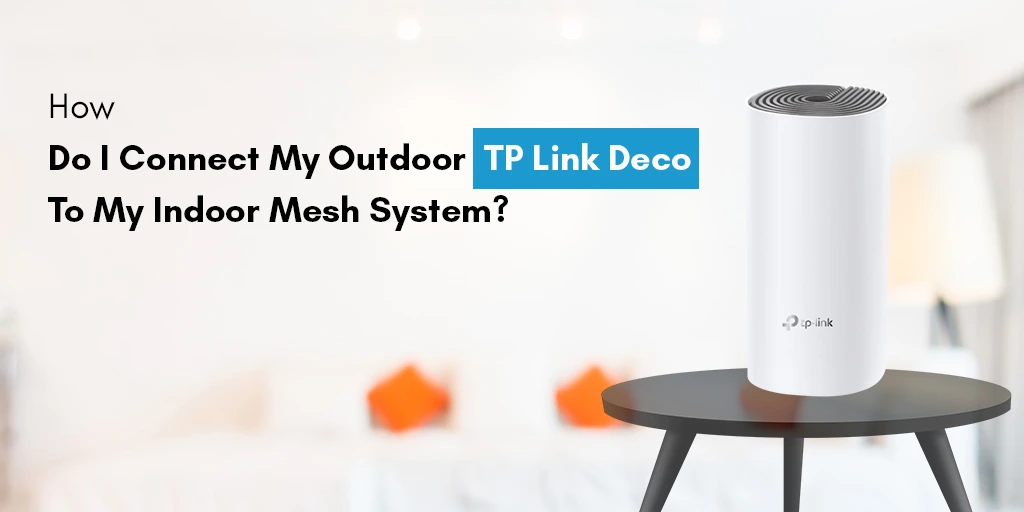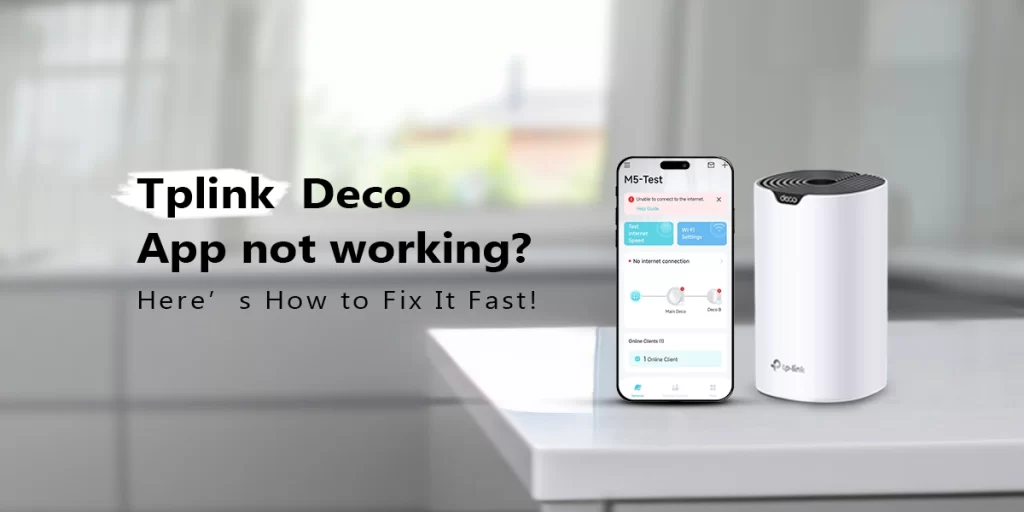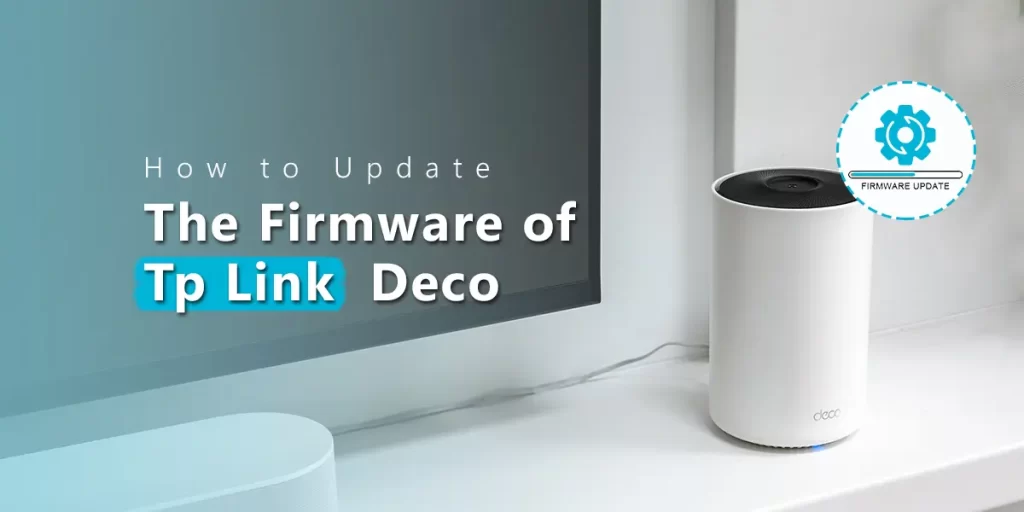
It is now essential to set up a smooth internet connection that covers the complete house, inside and out. Strong Wi-Fi connection outside your home is essential whether you’re working from the garden, streaming on the patio, or keeping an eye on your outdoor security cameras. Fortunately, TP-Link’s Deco mesh Wi-Fi solution has made this feasible. To guarantee continuous coverage across your property, we’ll explain in this blog post how to connect outdoor tplink deco to indoor mesh to your inside mesh network.
Why Build a Mesh Network Outside?
It’s critical to comprehend the advantages of expanding your mesh network outdoors before beginning the technical steps:
- Smooth connectivity: When you go in and out of your house, you won’t have to manually switch between networks.
- Strong signal for outside smart devices: outside cameras, smart lights, and motion sensors require stable connectivity.
- Enhanced productivity and lifestyle: Take use of internet content or make business calls from any location on your property.
Knowing How to Use the TP-Link Deco Mesh System
Mesh networking is the foundation upon which the TP-Link Deco system operates. Unlike typical routers that broadcast from a single point, Deco units work together to create a unified network. By functioning as satellites, each Deco node improves the efficiency of the internet signal’s distribution throughout your house.
Regarding outdoor coverage, TP-Link provides weather-resistant Deco models, including the Deco X50-Outdoor, that are made especially for harsh conditions.
Things You’ll Need
You’ll need the following to connect outdoor tplink deco to indoor mesh:
- Your modem is already set up and connected to at least one indoor TP-Link Deco unit.
- An outdoor Deco device, like the Deco X50-Outdoor or other similar variants.
- access to your smartphone’s Deco app.
- a power outlet close to where the outdoor Deco unit will be installed.
- Ethernet cable is optional for wired backhaul.
How To Connect Outdoor Tplink Deco To Indoor Mesh: A Comprehensive Guide
1. Finish the Indoor Configuration
- Make sure your indoor mesh system is up and running. Your modem and the primary Deco unit should be linked and operating properly. You can use the Deco app to confirm this.
- Follow the Tplink setup instructions in the box if you haven’t already, or go to tplinkdeco.net for official instructions.
2. Turn the outdoor decor on.
- Put your outdoor Deco at a weatherproof spot close to the edge of the Wi-Fi coverage area of your indoor network. Plug it into a power source and wait for the LED indication to start pulsating blue, which signifies it’s ready for tplink deco setup.
3. Launch the Deco App.
- Launch the Deco app on your mobile device. To add a new Deco unit, tap the “+” symbol in the higher right angle.
- After choosing your Deco model from the list, adhere to the instructions.
4. Allow the App to Locate Outdoor Décor
- The app will start looking for a fresh Deco. It will inevitably try to add it to your contemporary network once it has been recognized.
- The connection should be made wirelessly if your indoor Deco units are within range.
- When connecting outdoor TP-Link Deco to interior mesh, this is the most popular technique.
5. Use Ethernet Backhaul (Optional)
A wired backhaul is an option if you want the most reliable connection and your outdoor unit is close enough to run an Ethernet cable. Simply connect an Ethernet wire from one of your inside Deco units to the outside unit.
This approach guarantees optimal speed and dependability, making it particularly helpful in locations with dense walls or signal interference.
6. Placement Optimization
Once added, check the signal strength between the closest inside node and the outdoor Deco using the Placement Assistant feature of the Deco app. Try moving the outdoor device a little bit closer to the home or utilizing an Ethernet backhaul if the signal is poor.
7. Last Verifications
Following setup, make sure of the following:
- The Deco app shows the outdoor Deco online.
- A stable connection is shown by a green or white status LED.
- Your mobile device seamlessly changes between interior and outdoor nodes when roaming.
You’ve figured out how to connect outdoor tplink deco to indoor mesh.
Advice for Maximum Efficiency
- Steer clear of metal obstacles: Metal sheds, gates, and fences can interfere with wireless transmissions.
- Elevate the unit: You can increase range by putting the outside Deco a little higher.
- Frequent firmware updates: For the newest security and performance improvements, keep your Deco units updated through the Deco app.
Solving Typical Problems
- No outside deco was found: Make sure it is within range and powered on. Try again after rebooting both devices.
- Weak signal: Move the outdoor device or use an Ethernet backhaul.
- Nodes are not switched by the device: Make sure the Deco app has seamless roaming enabled.
Concluding Remarks
By learning connect outdoor tplink deco to indoor mesh, you can extend dependable, fast internet coverage throughout your entire property and realize the full potential of your home network. A solid connection is essential whether you’re working on the patio, enjoying coffee in the garden, or monitoring your outside security cameras.
The Deco app simplifies the procedure, and you may have a flawless internet experience both indoors and out with the correct setup and positioning.
FAQs
Is it possible to combine indoor and outdoor TP-Link Deco models in a same mesh network?
Indeed, mixing different models—such as indoor and outdoor units—within the same mesh network is supported by TP-Link Deco. They will cooperate to provide seamless Wi-Fi coverage throughout your entire property, if they are compatible, which is typically verified in the Deco app.
Is wiring required for the outdoor TP-Link Deco to function with the indoor mesh?
No, the indoor mesh system can wirelessly link to outside Deco units. However, if it is physically feasible, utilizing an Ethernet cable (wired backhaul) is advised for the optimum stability and speed, particularly over longer distances or through walls.
How far away from the interior units can the outdoor TP-Link Deco be placed?
Environmental elements such as walls, materials, and interference affect the maximum range. The outdoor decor can usually be placed between 30 and 50 feet away from an interior unit. Finding the ideal location for dependable connectivity is made easier by using the Placement Assistant feature of the Deco app.
If the outside decor isn’t connecting to the indoor mesh, what should I do?
First, make sure the outdoor unit is within range and powered on. Try pairing via the Deco app once more after restarting both devices. Consider relocating the unit closer or establishing a wired backhaul connection with an Ethernet cable if wireless pairing keeps failing.

